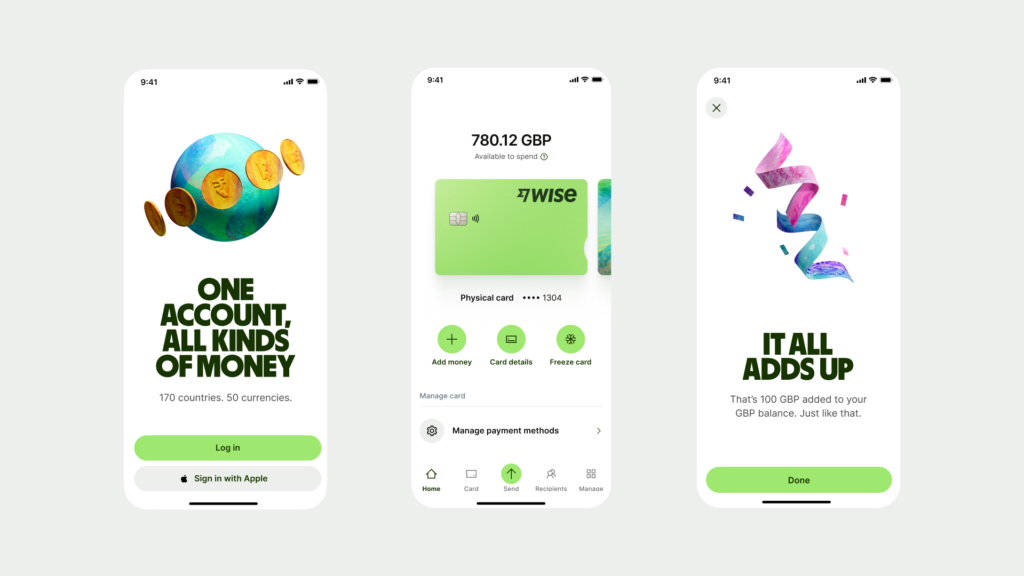International Bank Transfer Fees: All Costs Revealed [2023]
International bank transfers allow you to send or receive money anywhere in the world. But how much do international bank transfers really cost?
The true cost of international transfers can be pretty tricky to work out, as several different fees can apply every time you send a payment overseas. Plus, the costs can vary based on the provider you pick, the destination, the currencies involved and how fast you need your money to arrive.
This guide runs through the fees to look out for when sending an international bank transfer, including a comparison of some major Australian banks against specialist services Wise and OFX. Picking a specialist like Wise, WorldRemit or OFX can be a smart way to avoid some of the costs involved with sending money overseas with a bank – and may mean your money arrives faster too.
- International bank transfer fees explained
- Cost of an international transfer: a comparison
- What factors impact the cost of international bank transfer fees?
- Fees applied on international SWIFT transfers
- Currency conversion fees
- How to avoid international transfer fees
- International transfer fees explained
International bank transfer fees explained
Banks are obliged to tell you the fees you’ll pay for any international bank transfer you make – but the real costs of your payment can still be pretty confusing and complicated, thanks to several different fees and – often – a whole bunch of different ways to set up your transfer.
As a general rule, transferring money in person will be more expensive than doing so online or through your bank’s mobile banking service. You’ll also sometimes find that transferring money to another account within the same bank is cheaper than transferring money to a different bank.
That said, the total cost of sending money overseas can still be pretty staggering. According to World Bank figures, the average cost of an international bank transfer can be around 6% of the amount transferred. These costs are usually divided into 3 different fee types – let’s break them down one by one.
Sender fees
The sender fee – usually described as a transfer fee – is normally pretty transparent and set out in your account terms and conditions. However, sender fees may vary based on how you set up your payment – online or in person, for example – the value of the transfer, and where the money is headed.
Receiving fees
Depending on how you set up your payment, there are also likely to be receiving fees, including third party charges and costs applied by the recipient’s own bank. Third party charges can often creep in when you send a SWIFT payment, as the money can be routed through one or more partner banks, called intermediaries or correspondent banks, which can deduct a service fee as they process the payment.
To give an idea, Commbank publishes a list of average correspondent bank fees by currency and country. This shows that the extra fee to send a euro payment may be around 12 EUR, and when sending money to the UK you’ll pay an extra 6 GBP on average. These fees are in addition to the transfer fees you’ll pay when you set up the payment in the first place.
In some cases, the sender can choose to cover some or all of these third party fees – but if not, they’re effectively paid by the recipient, as they are deducted from the payment before it’s deposited. That means the recipient gets less than you might expect.
Exchange rate fees
Finally you’ll usually run into exchange rate fees when you send a payment overseas with a bank. These costs can be called an exchange rate markup or spread. Exchange rate fees are tricky to spot as they are usually a percentage fee added onto the exchange rate applied to change your dollars to the currency you need. Exchange rate fees can mount up quickly – until they’re often the highest of all the fees you’ll pay on your transfer.
In general, the overall costs of sending an overseas transfer with a bank can be less transparent than using a specialist provider like Wise or OFX. Specialist services also tend to offer better exchange rates compared to the banks – some, like Wise, pass the Google rate directly on to customers, and split out the full costs of the payment transparently so it’s easy to check and compare.

Cost of an international transfer: A comparison
It’s important to compare the different options available to you before transferring money abroad. Fees, exchange rates and delivery times can vary hugely between providers – with regular banks often lagging behind specialist services.
From Australia you may have the choice of 2 different types of international transfer:
- International transfers with a specialist service – online and in-app providers can help you move your money all over the world
- SWIFT transfers – the most common way to send an international transfer from Australia when you arrange payment through a bank
We’ll cover the fees for these different payment types in more detail a little later.
SWIFT payments can be pricey, and can take a few days to arrive. However, even with SWIFT transfers, the fees and exchange rates you’ll get can vary widely between different banks and specialist providers. If you send your money with a specialist service instead, your payment could be routed through a different payment network, which may be more efficient – and cheaper.
To illustrate, let’s look at a comparison between 2 major Australian banks and a couple of specialist services – Wise or OFX.
In this comparison we are assuming you’re sending a standard transfer online, of 1,000 AUD to be deposited in USD. To show the impact of both exchange rate fees and sender fees, we’ll focus on how much your recipient gets in the end with each provider:
| Provider | Fees | Exchange rate | Recipient gets |
|---|---|---|---|
| Wise | 5.40 AUD | 0.660700 | 657.13 USD |
| OFX | 15 AUD | 0.651187 | 641.42 USD |
| ANZ | 9 AUD | 0.639306 | 633.55 USD |
| NAB | 30 AUD | 0.643898 | 624.58 USD |
- Information correct at time of writing – 8th March 2023
As you can see in this comparison, the recipient gets more if you pick a specialist provider like Wise, as opposed to a major Australian bank.
In most cases, the difference in how much your recipient gets comes down to the exchange rate used to convert your funds from Australian dollars to US dollars, rather than the upfront transfer fee. That’s why it’s important to pick a provider which uses the mid-market exchange rate – or as close as possible to it – to get the best available deal.
What factors impact the cost of international bank transfer fees?
When you send money overseas, there are several factors that can influence how much you’ll pay:
- Delivery speed: some providers and banks offer expedited services which might get your money moving faster, but can cost more
- Currencies and countries involved: Many banks and money transfer services have variable rates and fees depending on the country you’re sending to, and the currency you need to have deposited at the other end
- Payment provider: which payment provider you select can make a huge difference to the overall cost of your transfer – specialist services often beat the banks on costs and offer better exchange rates, too
Fees applied on international SWIFT transfers
If you’re arranging your transfer through your bank you’ll usually be offered a SWIFT transfer. SWIFT is the payment network favoured by banks for over 50 years, in which a sending bank works with one or more intermediary banks to route a transfer to its destination – a bit like taking a journey involving several connecting flights. SWIFT fees can vary widely – and can often be pretty high.
You might find you’re better off choosing a specialist payment service like Wise to get lower fees and a better rate compared to your bank. That’s because specialist services have built their own payment networks to avoid SWIFT – and the fees which come along with it – to get your money moving faster and for a lower fee.
Currency conversion fees
We mentioned earlier that you’re likely to pay exchange rate fees when you send money overseas with a bank. But what does that really mean?
When you look for an exchange rate on Google or with a currency converter tool, you’ll be shown the mid-market exchange rate. That’s the rate a bank or specialist transfer service gets when they buy currency on wholesale markets. However, it’s not usually passed on to customers. Instead, banks add a markup – an extra fee – to the rate they use for retail transactions, which can be in the region of 3% to 5% depending on the currencies and the specific provider in question.
That may not sound like too much but it quickly mounts up. Here’s an overview of what a 3% markup will do to your overall costs on a few different transfer values:
- If you’re sending a payment of 1,000 AUD, a 3% markup will add 30 AUD to your overall transfer costs
- If you’re sending a payment of 5,000 AUD, a 3% markup will add 150 AUD to your overall transfer costs
- If you’re sending a payment of 10,000 AUD, a 3% markup will add 300 AUD to your overall transfer costs
Exchange rate markups are also difficult to spot, making it harder to work out the true cost of your payment. Compare your bank’s rate to the Google rate to see the difference.
How to avoid international transfer fees
There’s no such thing as a completely free international transfer, but it’s possible to find ways to reduce the cost when sending money abroad.
Compare exchange rates
We saw in our comparison earlier how much a bad exchange rate can impact the amount of money your recipient gets in the end. Bank exchange rate markups vary, and are usually pretty steep. Compare a few providers – like Wise and OFX – against your own bank, to see if you can get a better rate.
Comparing your options has never been easier – just use the Currency Shop price calculator to easily see what the cheapest providers are for any currency route.
Go for transparency
Bank fees for overseas payments are complex. And that makes it pretty difficult to see exactly what you’re paying, or how much your recipient should get in the end.
You may find it easier with a specialist provider to see the full costs of your payment – plus you can usually control the amount your recipient gets at the other end. Check out services like Wise for fully transparent fees and the Google rate, or alternatives like OFX and WorldRemit which also offer easier ways to control the costs you pay, and how much your recipient gets in the end.
International bank transfer fees explained
Sending a payment overseas with your bank may be safe and familiar – but it could mean you’re in for higher fees and a worse exchange rate, compared with a specialist service like Wise or OFX.
Before you start to arrange your payment, compare a few alternative options on the Currency Shop price calculator. You might be surprised at how much you can save.
FAQ – International bank transfer fees
How much does it cost to send an international transfer?
International transfer fees vary widely based on the value of your payment, where you’re sending money to, and the specific bank or provider you pick. You may find that specialist services like Wise, OFX and WorldRemit offer more transparent fees and a better rate compared to a traditional bank.
Are international transfers free?
International transfers are not free. However, some banks and providers may state that they can offer ‘fee free’ transfers overseas. In this case, they’re likely just hiding their fees in the exchange rates used to convert your dollars to the currency you need. That’s not transparent and may mean you end up spending more than you realise on your transfer.
Which bank is best for international transfers?
There’s no single best provider for international transfers. It’ll usually come down to the specific payment you need to make. Specialist services like Wise and OFX can often offer exchange rates which beat the banks, and lower overall costs. Compare a few options before you get started to make sure you get the best available deal.
Who covers the fees of an international bank transfer?
There are several fees involved with sending an international transfer, which can mean that both the sender and recipient end up paying some of the costs. If you want to limit the costs of your international payment, try using a specialist service like Wise which cuts the overall fee, and is completely transparent in what you’re paying for your overseas transfer.

